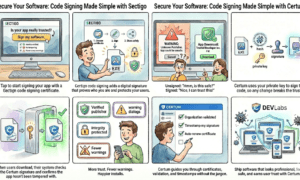Step into the time machine with us, as we embark on a captivating journey through the ages, where dreams once confined to science fiction pages, have materialized into our everyday reality. As consumer technology has continued to evolve at an unprecedented pace, it’s hard not to be both astounded and marvel at how far we’ve come. Join us as we trace the fascinating path from fantastical imagination to tangible innovation, unveiling the miraculous advancements that have revolutionized our lives over the decades. Buckle up and prepare for a thrilling ride packed with mind-bending discoveries and unexpected twists – because this is no ordinary tale; this is a remarkable chronicle of human ingenuity transforming sci-fi fantasy into jaw-dropping reality.
What is Consumer Technology?
Consumer technology has evolved over the decades, from early Sci-Fi fantasies to today’s reality. In this article, we’ll take a look at how consumer technology has changed and grown since the 1950s.
In the 1950s, most people relied on manual technologies, such as typewriters and electric clocks. Mechanical appliances were rare, and even if they were available, most people couldn’t afford them. TVs weren’t even invented until after World War II.
In the 1960s, electronic consumer goods began to become more prevalent. This was due in part to advances in manufacturing techniques and electronics technology. Some of the earliest electronic products included TVs, stereos, and calculators.
During the 1970s, personal computing began to take off. Mainframes were replaced by PCs, which allowed for more widespread use of software applications. This change led to widespread development of online services and websites.
The 1980s saw the development of portable gaming systems like Nintendo Game Boy and Super Nintendo. The 1990s saw the birth of the smartphone era with companies like Apple releasing their first smartphones. The 2000s saw continued innovation in handheld devices like PDAs (personal digital assistants), e-readers, digital cameras, gaming consoles, tablets, and more .
The future of consumer technology is still very much unknown, but we can be sure that there will be continued innovation and growth in this area.
How has Consumer Technology evolved over the years?
The history of consumer technology is a long and varied one. From sci-fi fantasies to modern day realities, the way we use and interact with technology has always evolved. Here are five key ways consumer technology has changed over the years:
1. The Innovation Of The Personal Computer
The personal computer was a major innovator in consumer technology. Originally developed in the 1960s, it took many years for the computer to become affordable and commonplace enough for everyday users. In 1975, IBM released its first PC, which cost $7,500. However, by the early 1990s, PCs had become widely available and affordable, and they have since revolutionized how we use computers.
2. The Growth And Expansion Of The Internet
The internet is one of the most important developments in consumer technology history. First developed in 1969, it only really became widespread in the late 1980s and early 1990s. At first, it was used primarily for research purposes, but it quickly grew into a popular source of information and entertainment. Today, the internet is central to our lives and continues to evolve rapidly–it’s even been used to help diagnose medical conditions.
3. The Proliferation Of Smartphones And Tablet Devices
As smartphones and tablet devices became more popular, they began to change how we use mobile phones and computers overall. For example, smartphones allow us to access highly specialized applications that were previously only available on more expensive desktop or laptop computers. In addition, tablet devices have revolutionized how we use digital media. They’re portable, easy to use, and allow us to access a wide variety of information and entertainment apps.
4. The Impact Of Social Media
One of the most important developments in consumer technology has been social media. Initially developed as a way to connect with friends and family, social media has since become an essential part of our lives. It allows us to share photos, videos, and thoughts with others quickly and easily. In addition, social media platforms like Facebook and Twitter have allowed businesses to connect with customers directly. This has helped small businesses grow into large enterprises, and it’s also led to the development of new marketing strategies.
5. The Proliferation Of Home Devices And Gadgets
gadgets have become increasingly popular over the years. These include devices like smart TVs, gaming consoles, and drones (among others). These devices allow us to enjoy various forms of entertainment while staying connected–they’re perfect for when we want to relax or unwind after a long day job. In addition, home devices have begun to play an important role in our everyday lives–from controlling our heating systems to monitoring our health status.
Types of Consumer Electronics
Some of the earliest consumer electronics were invented in the early 1900s. These early devices included radios and televisions. In 1948, television sets became available to the general public. This was a huge advancement as it allowed people to watch programming from all around the world.
Since then, consumer technology has evolved at an incredible rate. Here are some of the most popular types of consumer electronics:
1) Gadgets
Gadgets are small electronic devices that can be used for a variety of purposes. They include things like smartphones, tablets, and gaming consoles. Gadgets are generally considered to be less sophisticated than other types of electronics, but they can be fun and convenient to use.
2) Cellphones
Cellphones are perhaps the most common type of consumer electronics today. They allow people to make or receive calls, access social media platforms, and perform other basic functions. Many people also rely on their cellphone for banking and other important tasks.
3) Computers
Computers have become an important part of many people’s lives. They’re used for everything from managing finances to online shoppingbinglesectronics4)Televisions
TVs have continued to evolve over the years and now come in a variety of sizes and shapes. Some TVs also have built-in features that allow them to function as home entertainment systems.
Trends in Consumer Technology
From the telephone to smartphones, consumer technology has evolved over the decades. In fact, some of today’s most popular technologies were first introduced in the 1970s and 1980s. Here are five key things to know about today’s consumer technology:
1) Smartphones have become the go-to device for many people. A whopping 78 percent of American adults own a smartphone, according to Statista. And this number is only expected to increase in the years to come.
2) Virtual Reality (VR) is on the rise. In 2018, global VR spending amounted to $10 billion, up from just $2 billion in 2016, according to MarketsandMarkets. This growth is due in part to increasing interest in VR as a gaming and entertainment medium, but also due to increased investment by businesses across various sectors.
3) Gadgets are becoming more affordable and accessible. In 2010, it took an average of 227 days for a new product category (such as smartphones or tablets) to reach $1 billion in annual sales after its debut, according to Gartner Research Institute Inc. But that figure has now decreased significantly; it now takes just 116 days for a new category to reach this milestone. This rapid diffusion of innovation is likely attributable in part to technological advancements – such as faster processor speeds and lower costs – and wider availability of funding sources such as venture capital and crowdfunding platforms.
4) Our lifestyles are being shaped by digital assistants . Digital assistants such as Siri, Amazon’s Echo, and Google’s Home are becoming increasingly popular, with more than 50 percent of internet users owning at least one such assistant. These assistants are used for a variety of tasks, from setting alarms and querying Google for information or weather updates.
5) Technology is slowly but surely infiltrating into our everyday lives. In fact, 47 percent of American adults say they use technology on a daily basis to supplement their regular activities (such as reading newspapers or magazines), up from just 32 percent in 2014. This indicates that technology is slowly but surely becoming an integral part of our lives – not to mention a valuable financial resource.
Conclusion
In the 20th century, science fiction and fantasy became realities as we rode automation into our homes. In the 21st century, consumer technology continued to evolve with the rise of smartphones and social media platforms. Now in the 22nd century, we are continuing to experience jaw-dropping innovation as new advancements are made in virtual reality and Ai (artificial intelligence). What does this all mean for our future? I believe that it is only a matter of time until we reach a point where humans can merge with machines, paving the way for an even more intelligent and environmentally sustainable world.



































